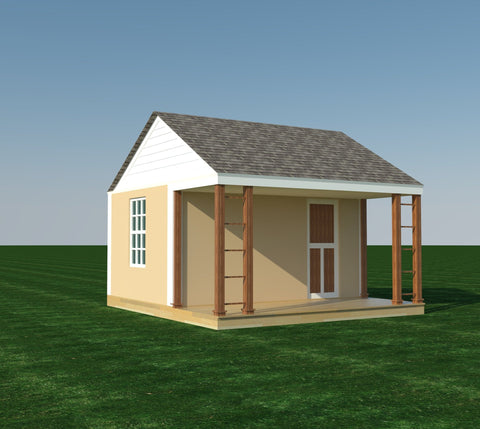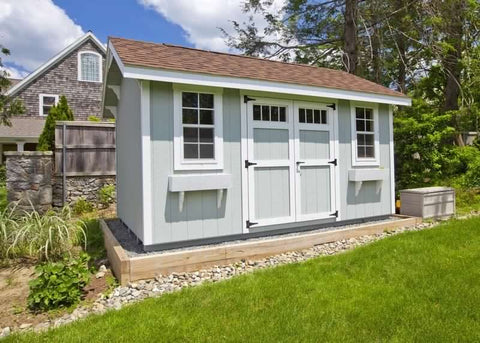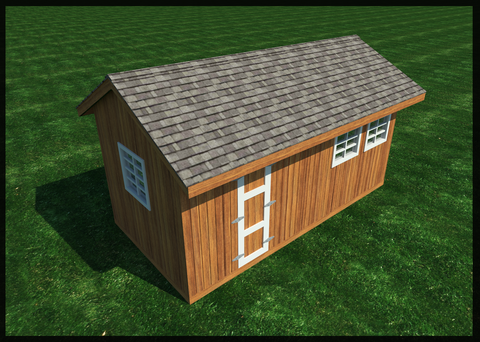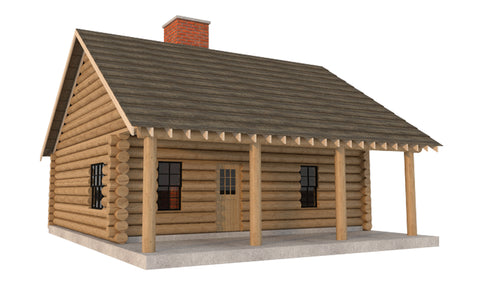Backyard Barn Style Shed Plans DIY Utility House Building Plan Gambrel Roof 8'x12'
These Barn Style Shed Plans will show you how to build your own Gambrel Barn Style Roof Shed. After following hard to understand drawings from books and the internet I decided to design and build my own sheds. I use the latest building practices and AutoCAD software to design these. This is for a 8' X 12' Gambrel Roof Shed. I like the size and design. I have included a Bill of Materials to make for easy shopping.
What is a Gambrel Roof Shed?
What is a gambrel roof shed? This type of roof is a type of wall-supported roof, often used in barns and other structures. It is more expensive than a typical gable roof, and is prone to wind gusts. However, this style is popular for a variety of projects. These sheds can offer many benefits, including making the most of limited space.
gambrel roofs are wall-supported
A gambrel roof is one of the most common types of roof used for sheds. It is a wall-supported design and lacks ridge boards. This type of roof structure also has the lowest pitch, so it limits the amount of attic space available. Some homeowners would prefer a gambrel roof over a pitched one for several reasons, including aesthetics and maintenance costs.
A gambrel roof has two slopes and is most common on old farm buildings and houses from the colonial era. It can tie your property to Dutch and Georgian styles, as well as add character to newer construction. Although some people dislike the look of a gambrel roof, it speaks to your sense of culture. The style has many advantages, including its ability to add value to a shed.
They are used for barns
Building a gambrel roof shed requires some basic woodworking techniques. The first step is to build the roof trusses, which are a series of curved beams. These trusses must be cut to the correct size and angle. You can use a miter saw to cut them to size and shape. You should also add plywood gussets to reinforce the joints.
This roof style also comes in a variety of sizes. Pre-built gambrel roof sheds range in size from 8x8 feet to 12x20 feet, while on-site builds may be larger than this. The overall square footage of the building will determine the size of the shed you need. A standard 8x8 shed offers 424 cubic feet of storage, while a 12x20 shed may contain more than 2,000 square feet of space. Gable sheds are some of the most popular types of storage sheds, as they can easily blend with existing homes.
They are vulnerable to wind gusts
A gambrel roof is one of the most popular building styles in the United States. This type of roof can be symmetrical or asymmetrical, and it offers the advantages of sloped roofs, such as extra headspace. These roofs are vulnerable to wind gusts and can be vulnerable to moisture. This type of roof is typically used on barns and other buildings with large open spaces. It can also be incorporated into a mid-century modern house, including a log cabin.
Because of their aerodynamics, a gambrel roof is highly susceptible to wind damage. Stronger wind gusts may even lift the roof off a structure. As a result, it's vital to research your local weather before building a gambrel roof shed. You can mitigate this risk by making sure that the gambrel roof design is appropriate for your area.
They are more expensive than gable roofs
While gable roofs are the more common, gambrel roofs can also be an excellent choice for your storage shed. They have more room and are taller than gable roofs. In addition to offering more ventilation, gambrel roofs are also considered more flexible than gable roofs. But you need to consider the costs before choosing a roof style.
While gable roofs are more durable and require less material, gambrel roofs can suffer from several drawbacks. Because they have a flatter upper portion, gambrel roofs can collect snow. The lower part of gambrel roofs tends to be more vulnerable to strong winds, and they require regular waterproofing to keep out the elements. They can also suffer from seasonal precipitation, which decreases their lifespan.
All plans are designed by Ben Stone. Ben is a retired Engineer in Canada. Ben also drafts these himself using the latest AutoCAD software to ensure accuracy. He studied Engineering back in the early 1980's. After over 30 years in the Construction industry he developed a passion for building cool items around his farm and cabin. These are great DIY projects. With a little skill anybody can Do It Yourself. Ben is always a email away if you have any questions while building one of his projects. He is adding new plans all the time.









